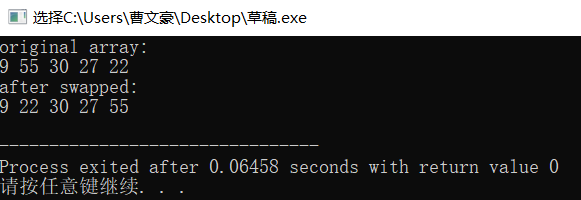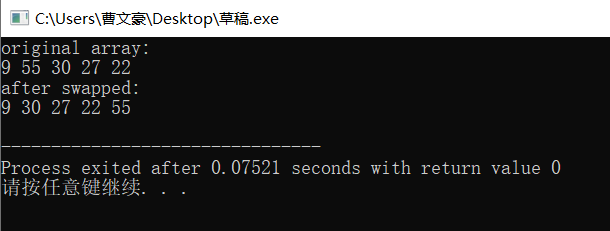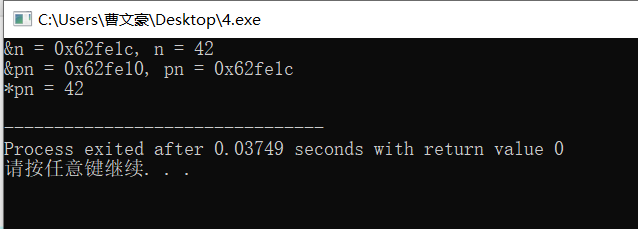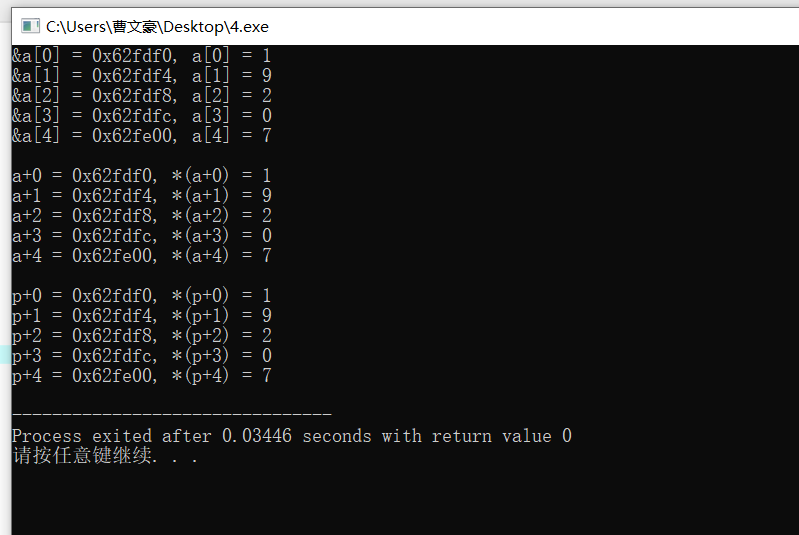文豪的实验5
1.(1)交换1次

(2)交换3次

第一种是直接找到最大值,与最后一项交换。第二种是把相邻两项较大值放在右边,并多次比较,从而实现最大值出现在最后。
2.
#include <stdio.h>
#define N 5
int binarySearch(int x[], int n, int item); // 函数声明
int main()
{
int a[N] = {2, 7, 19, 45, 66};
int i, index, key;
printf("数组a中的数据:\n");
for (i = 0; i < N; i++)
printf("%d ", a[i]);
printf("\n");
printf("输入待查找的数据项: ");
scanf("%d", &key);
index=binarySearch(a,N,key);
// 调用函数binarySearch()在数组a中查找指定数据项key,并返回查找结果给index
// 补足代码①
// ×××
if (index >= 0)
printf("%d 在数组中,下标为%d\n", key, index);
else
printf("%d 不在数组中\n", key);
return 0;
}
//函数功能描述:
//使用二分查找算法在数组x中查找特定值item,数组x大小为n
// 如果找到,返回其下标
// 如果没找到,返回-1
int binarySearch(int x[], int n, int item)
{
int low, high, mid;
low = 0;
high = n - 1;
while (low <= high)
{
mid = (low + high) / 2;
if (item==x[mid])
return mid;
else if (item<x[mid])
high = mid - 1;
else
low = mid + 1;
}
return -1;
}
 3.
3.
3.
#include <stdio.h>
#include <string.h>
#define N 5
void selectSort(char str[][20], int n); // 函数声明,两维数组作为函数参数
int main()
{
char name[][20] = {"Bob", "Bill", "Joseph", "Taylor", "George"};
int i;
printf("输出初始名单:\n");
for (i = 0; i < N; i++)
printf("%s\n", name[i]);
selectSort(name, N); // 调用选择法对name数组中的字符串排序
printf("按字典序输出名单:\n");
for (i = 0; i < N; i++)
printf("%s\n", name[i]);
return 0;
}
// 函数定义
// 函数功能描述:使用选择法对二维数组str中的n个字符串按字典序排序
void selectSort(char str[][20], int n)
{
int i, j, k;
char temp[20];
for (i = 0; i < n - 1; i++)
{
k = i;
for (j = i + 1; j < n; j++)
if (strcmp(str[j],str[k])<0)
k = j;
if (k != i)
{
strcpy(temp, str[k]);
strcpy(str[k], str[i]);
strcpy(str[i], temp);
}
}
}

4. (1) 0x62fe1c 42
(2) 0x62fe10 0x62fe1c
(3) n的值

5.(1)可以
(2)可以





 浙公网安备 33010602011771号
浙公网安备 33010602011771号